This Blackened shrimp is smoky and flavorful, with a perfectly charred exterior. The blackened crust is made using a homemade spice blend rub. This Louisiana and Southern favorite is tender and juicy and pairs wonderfully with rice, vegetables, and classic sides.
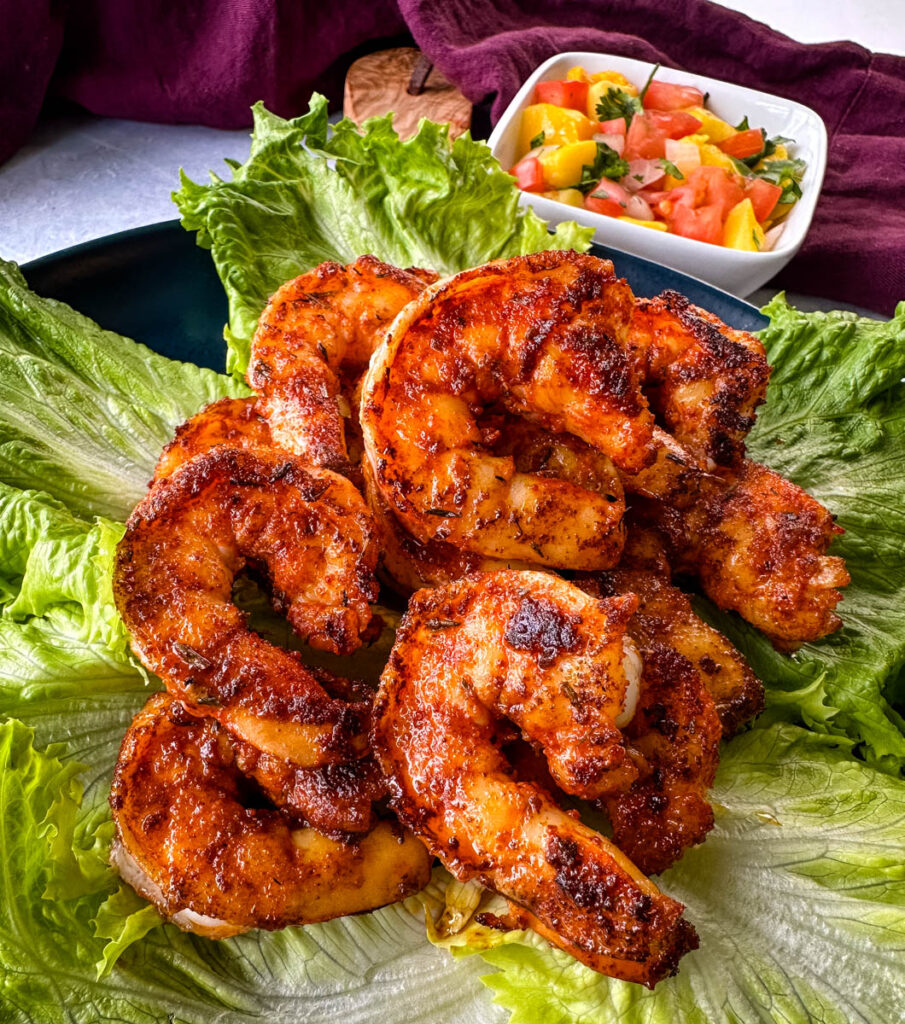
What is Blackening
It’s a cooking technique that involves coating food, typically seafood or meat, with a blend of spices and herbs and then searing it at a high temperature in a cast-iron skillet or on a grill. The spice blend typically includes ingredients such as paprika, cayenne pepper, garlic powder, onion powder, and black pepper.
During the cooking process, the spices and herbs char and create a dark, almost blackened appearance on the surface of the food, which is how it gets its name. The high heat and quick cooking time help to lock in the moisture and flavor of the food, resulting in a juicy and flavorful dish.
People will sometimes confuse it for burnt. When done properly, it isn’t!
Blackening is a popular cooking technique in southern United States cuisine, particularly in Louisiana, where it is often used to prepare dishes such as blackened catfish or blackened chicken.
It can also be used to prepare vegetables and other types of seafood.
Butter is almost always used because the brown-black color of the crust results from the combination of browned milk solids from the butter and charred spices.
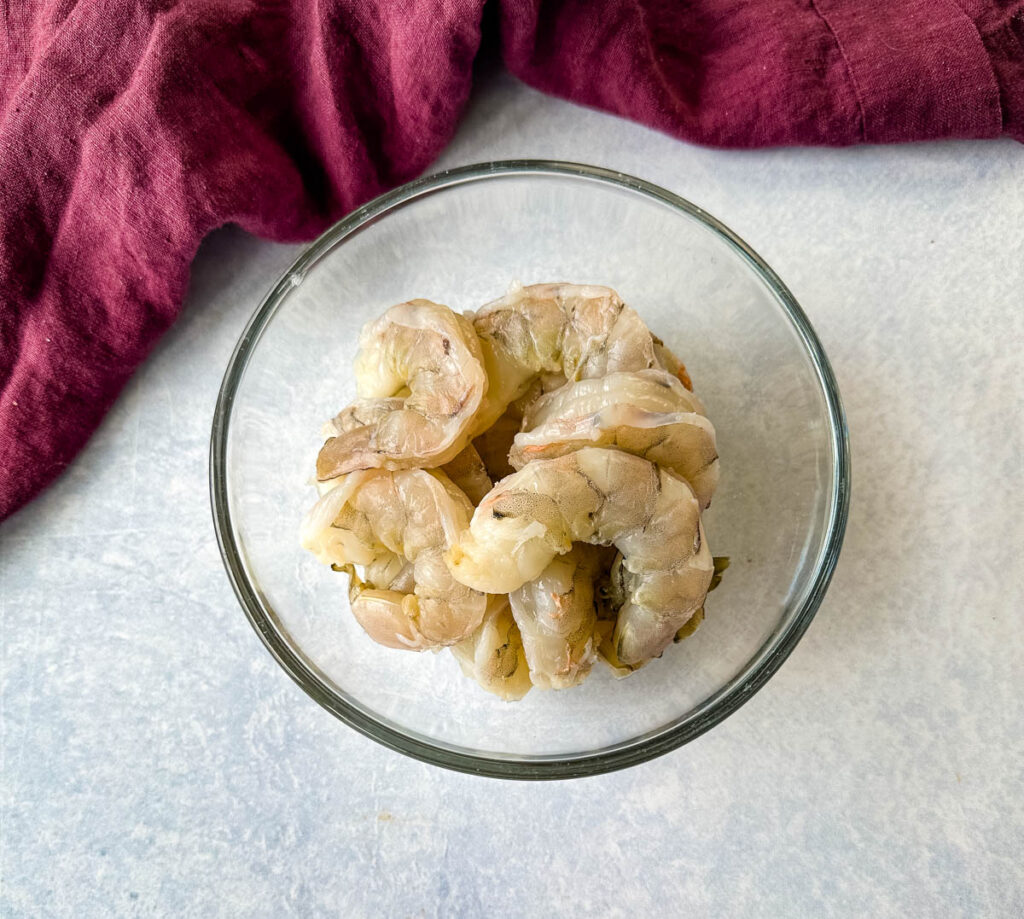
What Type of Shrimp to Use
This dish is often used as a main dish. You can add the shrimp to tacos, rice bowls, or eat them as the star of the show along with some delicious sides. Since it’s the main event, I recommend fresh, large, and firm-textured shrimp, such as jumbo or extra-large shrimp. Medium and small shrimp are best for soups and salads.
Look for shrimp that is fresh, with no odor or discoloration. Avoid shrimp that are soft or mushy.
Peeled shrimp are more convenient and faster to prepare, as the shell and tail have already been removed. This can save time and effort in the kitchen, especially if you are making a large batch of shrimp or if you are not comfortable with peeling shrimp yourself.
I usually use unpeeled shrimp because they typically have a stronger and richer flavor, they are also easier for me to find.
Another thing to consider is deveined shrimp vs shrimp that have not been deveined.
Deveined shrimp are shrimp that have had their digestive tract, or “vein,” removed. The vein is a dark, thin line that runs along the back of the shrimp.
Undeveined shrimp are shrimp that have not had their digestive tract removed. Deveining shrimp is a simple process that can be done by making a shallow cut down the back of the shrimp with a small, sharp knife and then removing the vein with the tip of the knife.
Be sure to check out our guides on Shrimp Size Guide and Counts Per Pound and How to Tell if Shrimp is Bad.
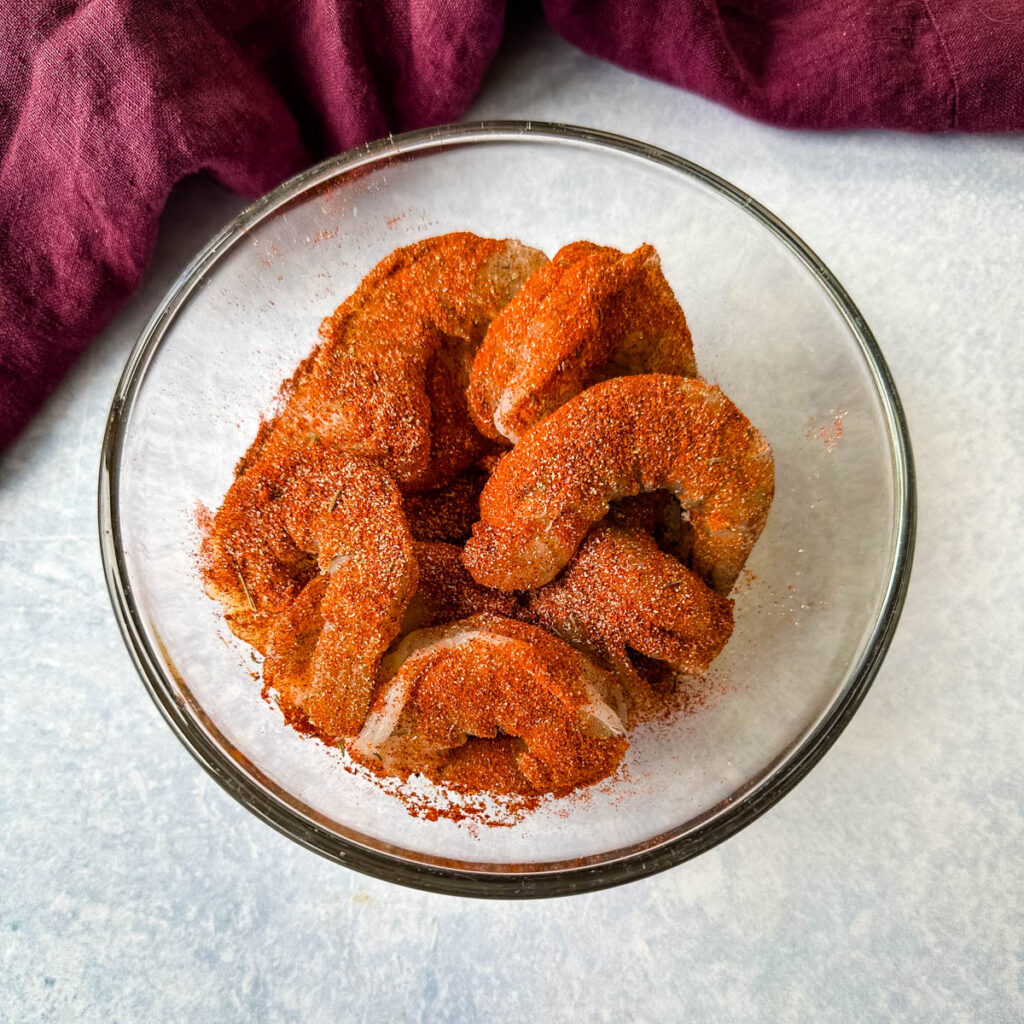
Key Ingredients for the Spices
Feel free to use a store-bought spice blend if preferred. I like to use my Homemade Blackened Fish Seasoning. It’s a blend of the following spices:
- Regular or Smoked Paprika
- Red Cayenne Pepper
- Dried Oregano
- Onion Powder
- Garlic Powder
- Salt
- Black Pepper
- Ground Thyme
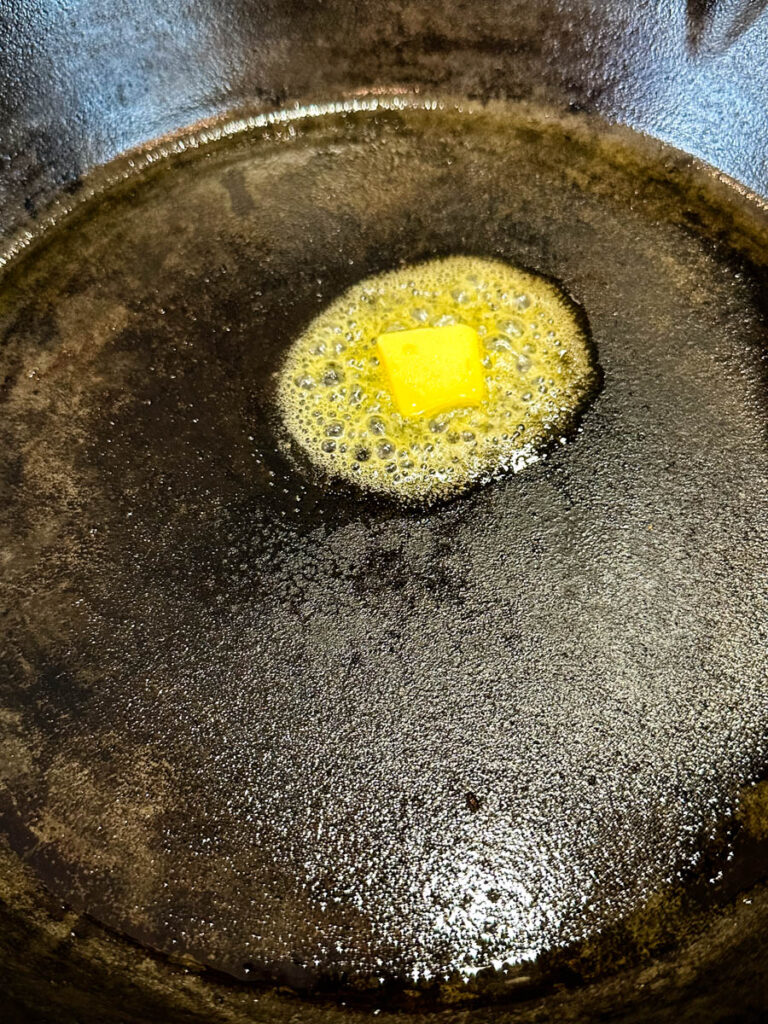
How to Make Blackened Shrimp
Full detailed instructions are below in the recipe card.
- Combine the spices in a bowl and sprinkle the spices over the shrimp and rub them in.
- Heat a cast iron or stainless-steel skillet on medium-high heat. Add 1 tablespoon of butter.
- When the butter has melted, add the shrimp to the pan. Do not overcrowd the pan. Cook in batches if needed.
- Cook, flipping to cook each side.
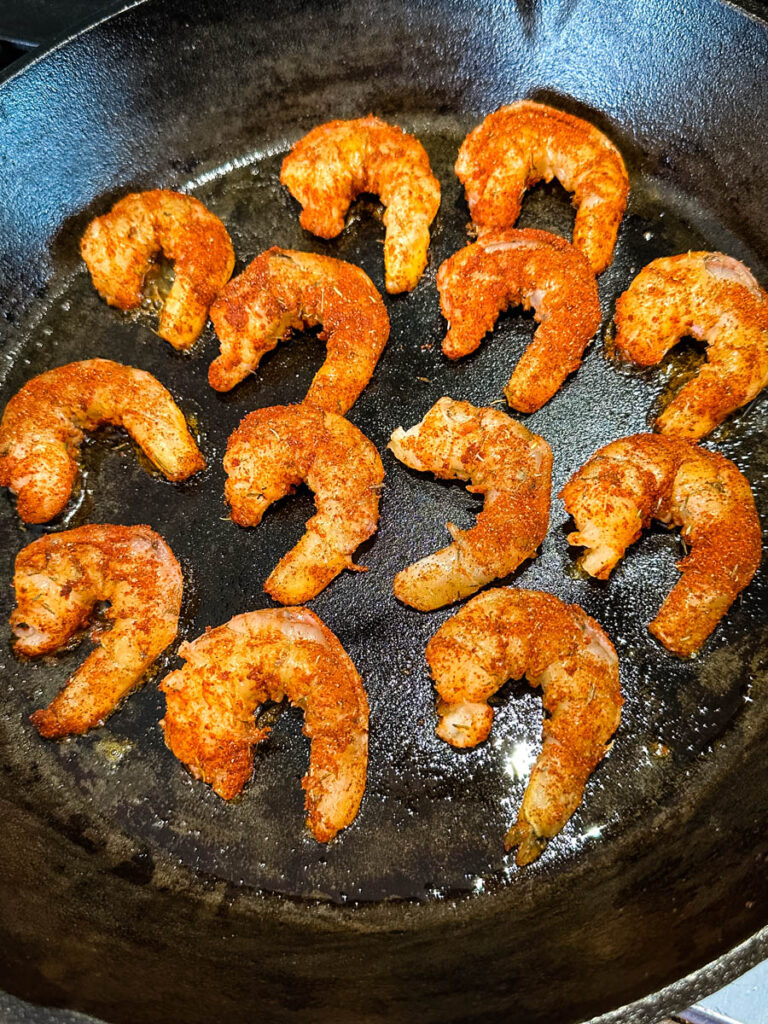
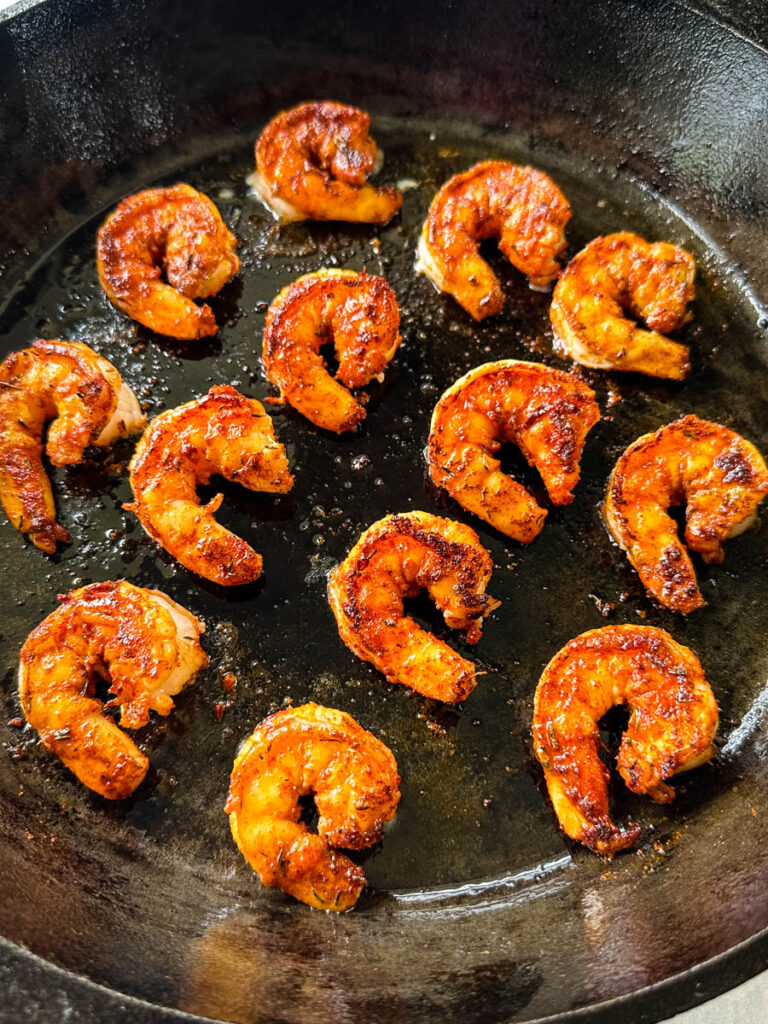
What Type of Pan to Use
It is best to use a heavy-bottomed cast iron skillet or a stainless steel skillet. These types of pans can withstand high heat without warping and can create a nice crust on the shrimp. Cast iron skillets are heavy and evenly distribute heat, which is important for getting a good sear on the shrimp. They also retain heat well.
Avoid using non-stick pans for blackening as they are not designed for high heat and may release toxic fumes if heated beyond their temperature limit. Also, non-stick pans may not produce the desired crust.
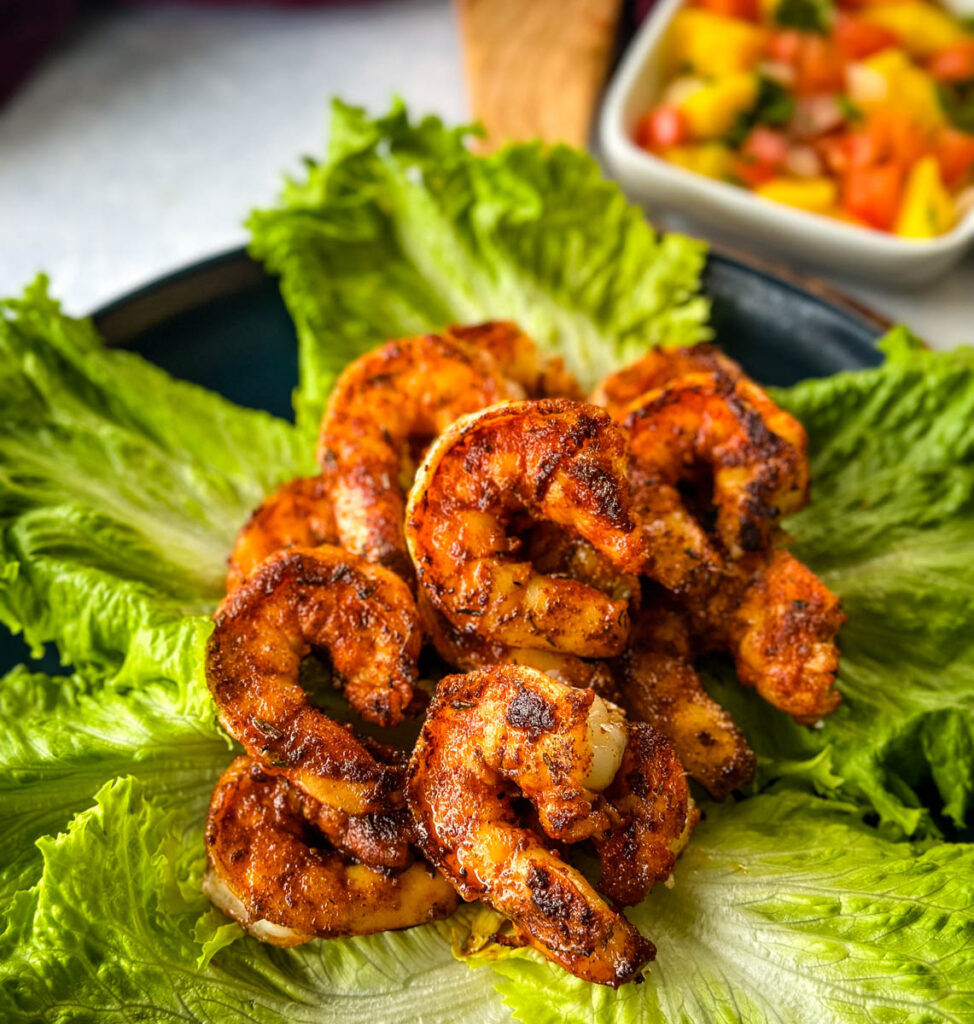
Air Fryer Shrimp
Refer to the recipe card below for details.
Grilled or Smoked Shrimp
Check out my Smoked Shrimp Recipe and Grilled Shrimp Salad.
How to Tell When the Shrimp is Done Cooking
Cooked shrimp will turn pink and opaque. The shrimp will also become firm when you touch it. Perfectly cooked shrimp usually has a C-shape, as opposed to a tightly curled O shape.
You can also check out my guide on How to Tell if Shrimp is Cooked here.
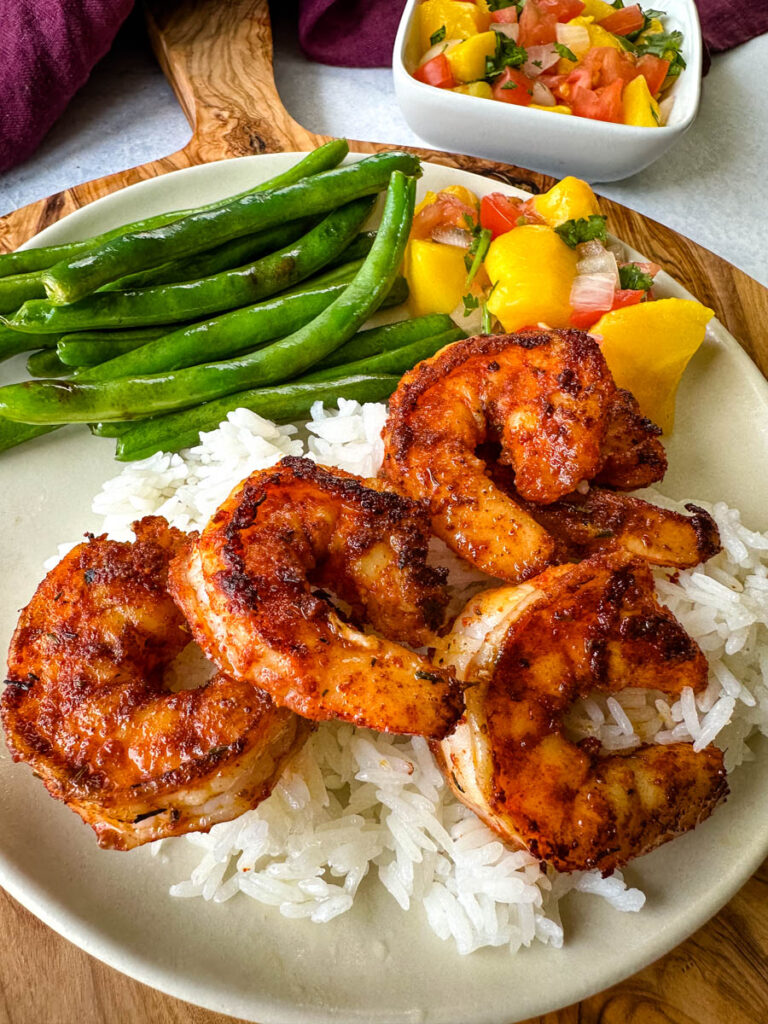
How to Store Leftovers
Leftovers can be stored tightly covered and sealed for 3-4 days.
How to Reheat
You can reheat the shrimp on the stove for a couple of minutes until warm. You can also use the oven or air fryer at 350 degrees until warm. I avoid the microwave to avoid overcooked and rubbery shrimp.
Pair With these Recipes
My Pineapple Mango Salsa pairs wonderfully and is a must for me when serving this dish. It balances out the heat so well!
Blackened Catfish
Fish Fry Seasoning and Breading
Blackened Chicken
Blackened Chicken Sandwich
Fish and Grits
Air Fryer Garlic Bread
Chipotle Cilantro Lime Rice
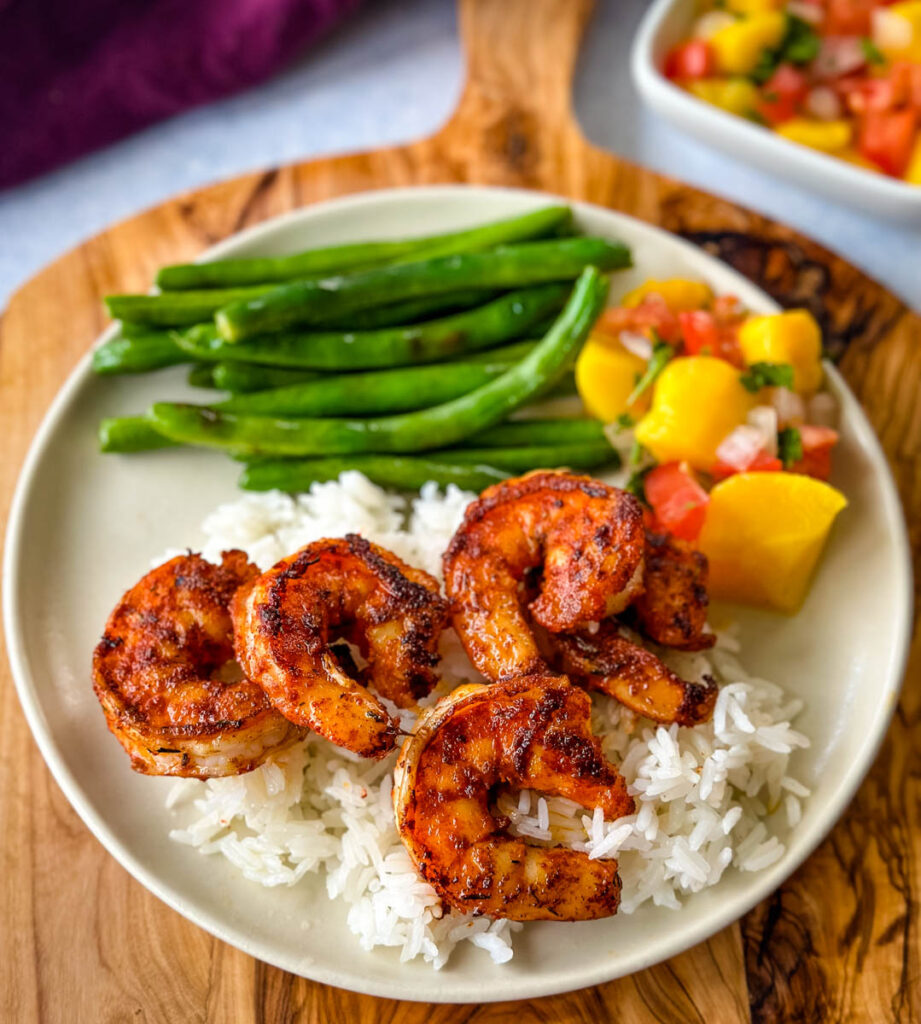
More Shrimp Recipes
Cajun Shrimp Salad
Creamy Shrimp and Corn Chowder with Potatoes
Creamy Shrimp Risotto
Cajun Shrimp and Sausage Pasta
Spicy Shrimp Tacos
Shrimp Burgers
Creamy Shrimp Enchiladas
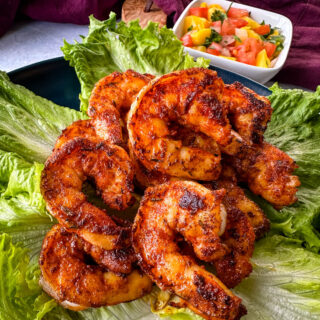
Blackened Shrimp
Ingredients
- 1 pound raw shrimp Peeled and deveined.
- 1 tablespoon unsalted butter or olive oil Melted and measured solid.
Homemade Spice Blend (Feel free to use a store-bought blend if you want).
- 1/2 tablespoon smoked paprika Regular paprika is fine.
- 1 teaspoon cayenne pepper See notes.
- 1/2 teaspoon oregano
- 1/2 teaspoon onion powder
- 1/2 teaspoon garlic powder
- salt to taste
- 1/2 teaspoon black pepper
- 1/4 teaspoon thyme
Instructions
- Combine the spices in a bowl and sprinkle the spices over the shrimp and rub them in. Ensure the shrimp is fully coated, but don't over-season it. The amount of spices you use will vary based on the size of the shrimp you are using.(This is why I recommend combining the spices first and then use your judgment of how much you will need for your shrimp.)
Pan Seared Shrimp Instructions
- Heat a cast iron or stainless-steel skillet on medium-high heat. Add 1 tablespoon of butter.
- When the butter has melted, add the shrimp to the pan. Do not overcrowd the pan. Cook in batches if needed.
- Cook, flipping to cook each side, for 3-5 minutes or until it is pink and opaque.
- Remove the shrimp and set aside to cool.
Air Fryer Instructions
- Air fry the shrimp at 400 degrees for 6-8 minutes or until it is pink and opaque.
Notes
- If you aren’t into spicy food, omit the cayenne pepper. If you prefer something with less spice, only add 1/4-1/2 teaspoon.
- For best results, I recommend using butter. The brown-black color of the crust results from the combination of browned milk solids from the butter and charred spices.
- When pan searing, the pan will need to get really hot. Cast iron usually smokes. This is normal. You can use a fan over the stove or open up a window as well.
- Blackening is meant to be cooked quickly and at a high heat. This means that the shrimp will cook quickly and the internal temperature will rise quickly. It is important to not overcook the shrimp, because this will make it dry and tough.
- Raw and frozen shrimp are translucent gray. When it’s cooked, it should be an opaque white with some pink and bright red accents. This is the best indicator of whether or not shrimp is fully cooked.
- When shrimp cooks, the muscle contracts, so the shrimp shrinks and curls. I find that it’s perfectly cooked when it has a C shape. I remove the shrimp from heat immediately when it reaches this shape. Often, if it reaches an O shape, and completely curls in, it will taste overcooked.
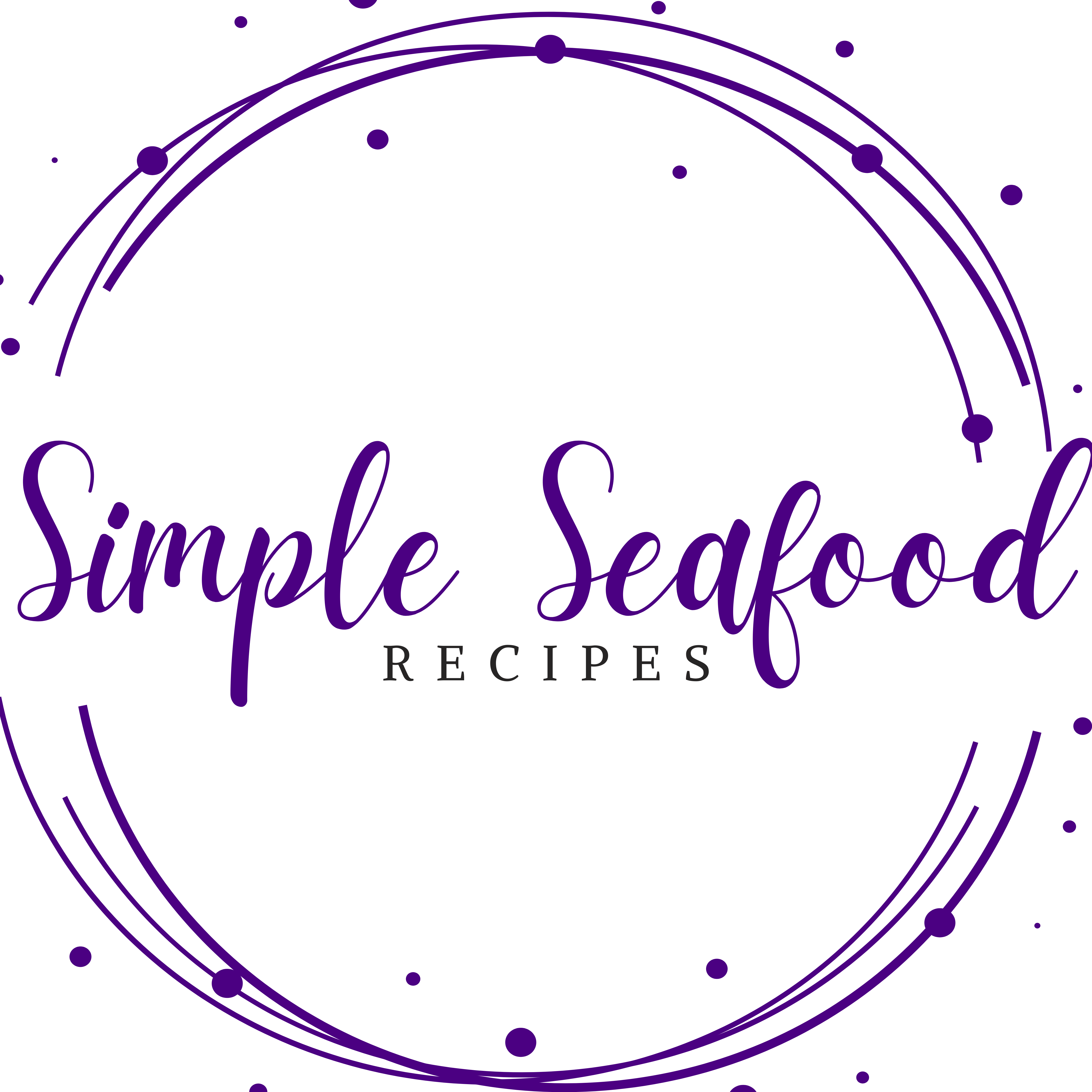
A.G.
Monday 8th of May 2023
Made a batch of these for meal prep this week and wow! Very flavorful, easy recipe!
Brandi Crawford
Tuesday 9th of May 2023
I’m so glad you enjoyed it!